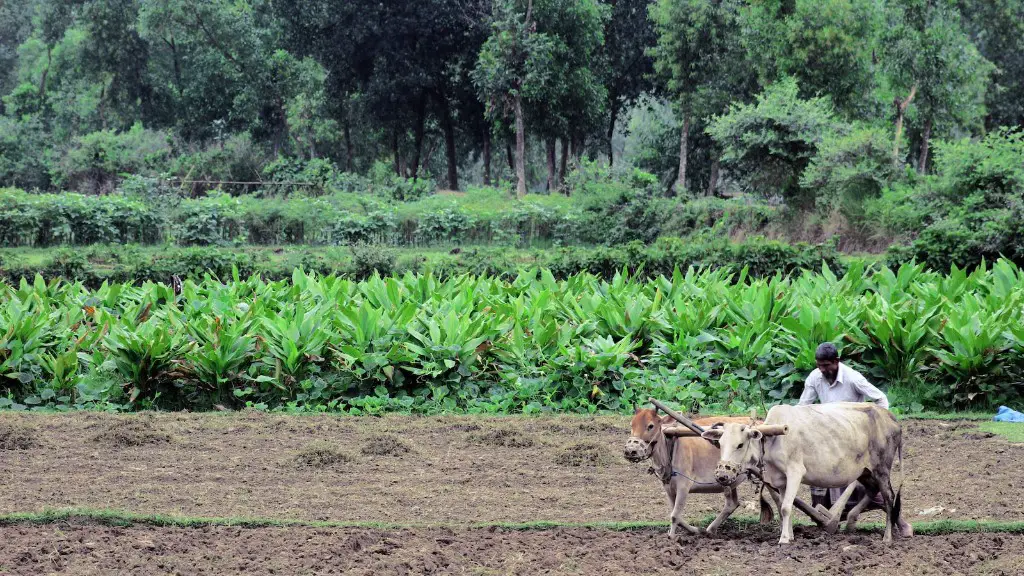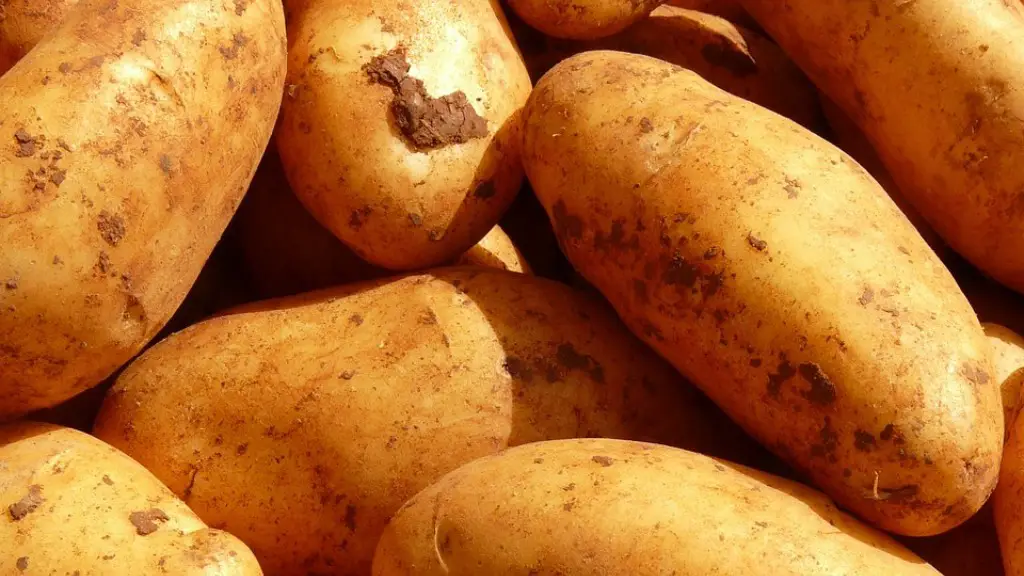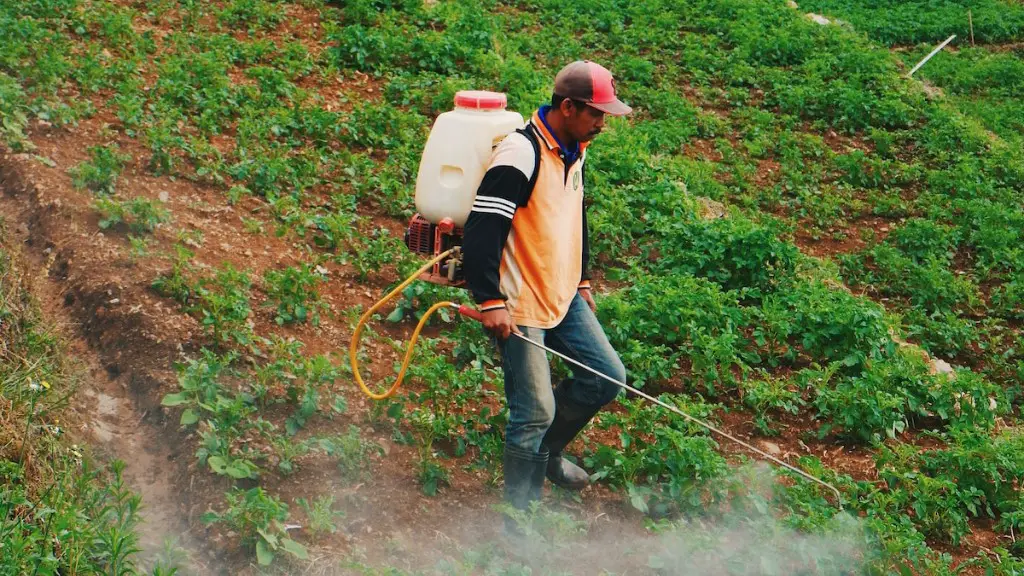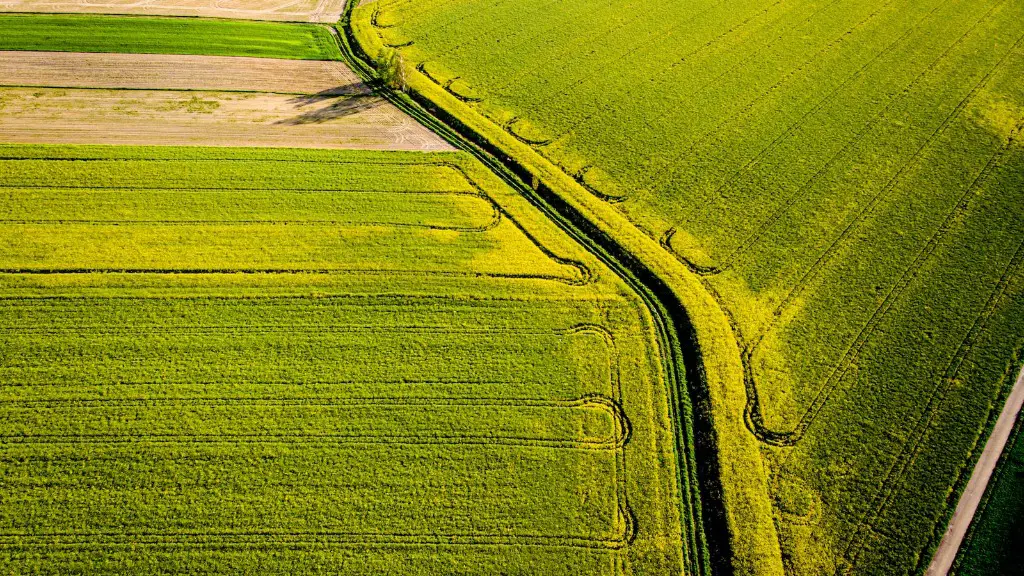Agricultural crops are the foundation of an agricultural system, and they refer to the variety of plants that people grow for food, fuel, feed, and fiber. The term “crop” may also refer to the harvested product of a particular variety of a plant, or the crop of a body of water.
Crops are typically grown and harvested by humans, although some species of plants can be wild. They can be divided into two primary categories: annual crops, which are replanted every year, and perennial crops, which are typically harvested year after year.
Crops play an important role in many aspects of an agricultural system. They provide food for humans, animals, and other organisms, including pollinators and soil microorganisms. Crops can also act as a source of biomass for fuel, feed for animals, and forage for livestock. Additionally, crop plants can provide fiber for textiles and construction materials.
For farmers, crop yields are the product of a number of factors, including soil fertility, water availability, weather and climate, pest and disease management, farming system and methods, and cultivar selection. All of these factors need to be managed and accounted for in order to sustainably produce high crop yields.
Agricultural production is highly dependent on the management of soil resources and the use of sustainable farming practices. For instance, a critical component of soil productivity is the management of soil organic matter, which is the basis for the fertility and productivity of soils. Farmers must maintain a balance between soil management and other aspects of crop production, such as fertilization, irrigation and pest management.
With increasing pressures on natural resources and climate change, sustainable crop production will become increasingly important in order to ensure food security and ecosystem health. Farmers must embrace innovative and climate-smart agricultural practices to maintain economic, environmental and social sustainability in their farming system.
How Crops Can Work to Improve Soil Health
Healthy soil is essential for sustainable agriculture and food security. Soil health is critical for many aspects of agriculture, including water retention, nutrient availability, and crop health. Enhancing soil health can be done through the use of cover crops, which are crops grown planted between main crops, or after or before the main crop harvest. Cover crops can provide a number of benefits, including protecting the soil from erosion, improving soil structure and fertility, and providing a habitat for beneficial organisms.
Leguminous cover crops are particularly useful, as they are able to fix atmospheric nitrogen into the soil, which can then be taken up by other crops. Cover crops also function as green manure, where they are plowed into the soil and act as a natural fertilizer.
No-tillage and conservation agriculture are other important strategies for improving soil health, and can also increase water efficiency and reduce carbon dioxide emissions. No-till farming brings the soil to the microbes and fauna, rather than bringing microbes to the soil, and is a low input, high output approach to farming. Conservation agriculture is a farming system that emphasizes low-disturbance, minimum tillage, mulch or cover crops, and rotations that include a variety of crops.
Agroforestry systems are also important for soil health and sustainability. Agroforestry merges trees and shrubs with cropping systems, which can provide a range of environmental, economic, and social benefits. Agroforestry systems can store carbon and protect against soil erosion, as well as provide fodder, fuel, medicinal plants, and food sources.
How Crops Can Mitigate Climate Change
Climate change is impacting agricultural systems and food production around the world, and mitigating its effects will require a range of strategies, including crop adaptation and resilience. Climatically resilient crops are stable varieties that can withstand or adapt to the changing environment. These crops must be able to survive extreme weather events, floods, droughts, and pests and diseases. They must also be able to survive long periods without water, and be able to tolerate a range of temperature fluctuations.
Crops can also be a source of renewable energy, as they can be used to produce biodiesel, ethanol, and other biofuels. Increasing the share of renewable energy in the energy mix is essential for transitioning to a low-carbon economy, and crops can facilitate this transition. Renewable energy sources such as biofuels can also reduce dependence on fossil fuels, which are a major source of climate change-causing emissions.
Certain farming systems can also help to mitigate climate change, particularly those that focus on sustainability and soil health. For example, organic farming does not rely on the use of synthetic fertilizers and pesticides, and it can help to reduce emissions of greenhouse gases. It also encourages biodiversity and provides habitats for beneficial organisms, such as pollinators, predatory insects, and soil microorganisms.
Agroecological systems, such as permaculture and agroforestry, also provide environmental and social benefits. These systems can be used to store carbon, protect against soil erosion, and provide fodder, fuel, medicinal plants, and food sources. They can also help to build climate resilience, and provide networks of diverse vegetation that act as an ecological buffer against the impacts of climate change.
How Crops are Marketed in Developing Countries
In developing countries, the marketing of food crops is an important part of the production system, and crop marketing presents a number of challenges and opportunities. The effectiveness of marketing activities is determined by market conditions and by the geographic, infrastructural, and institutional environment.
Marketing challenges can arise from inadequate infrastructural and physical access, such as transportation and storage, as well as inadequate access to information and the lack of market infrastructure and financial services in rural areas. In addition, unpredictable weather conditions and natural disasters can lead to wide fluctuations in crop production and prices, making it difficult for producers to predict demand and set prices.
Improving access to information and market infrastructure can help to increase crop productivity, as well as food prices, and increase farmers’ access to better markets. Developing effective marketing strategies and establishing market networks can help to reduce the risks associated with crop marketing and increase access to new markets.
In addition, technology and digitalization can play an important role in improving market efficiency, providing access to market information and improving business operations. For instance, digital technologies can provide market data, assist with production planning, and facilitate price and product comparisons.
Public policies can also help to improve the marketing of crops in developing countries. Policies such as price stabilization, quality assurance, and improved access to finance can help to increase productivity, stabilize markets, and ensure that producers receive fair prices for their products.
How Agricultural Insecticides Affect Crop Pest Management
Insecticides play an important role in controlling pests in agricultural systems. Insecticides are chemical compounds that are used to kill or suppress the growth of insect populations. Insecticides can be broadly divided into two categories: synthetic chemical and biological insecticides. Synthetic chemical insecticides can be applied to protect plants from pests, and they are usually sprayed onto crops or soil. Biological insecticides consist of naturally occurring organisms that act as a natural way to control pests.
The use of insecticides can alleviate losses caused by insect pests, but they can also present a risk to human health and the environment. Insecticides can persist in the environment and accumulate in food, water and soil, leading to potential health risks. This means that the use of insecticides must be carefully managed to ensure that their use does not exceed the minimum levels needed for pest control.
Integrated pest management (IPM) is a crucial approach for pest control that combines various strategies for controlling pests. These strategies can include cultural methods, such as crop rotation, habitat manipulation, and crop sanitation; mechanical methods, such as traps, vacuums and barriers; and biological methods, such as beneficial insects and integrated pest predators. The use of synthetic chemical insecticides should be a last resort, and they should only be used when all other methods have failed.
In addition, farmers should be aware of the potential risks associated with the use of insecticides. The use of protective clothing, such as gloves and respirators, can help to reduce exposure to insecticides. It is also important to read and follow the label instructions for insecticides, and to only use products that have been registered for use in the area.
What is Agrobiodiversity and How Does it Contribute to Crop Production?
Agrobiodiversity refers to the genetic diversity of crop and livestock species and its components, such as genetic resources, varieties and breeds. Agrobiodiversity plays an important role in the production of crops, providing a range of benefits such as improved grain yield, nutritional value and pest resistance. Agrobiodiversity is necessary for adaptation to changing climate and environmental conditions, and it provides a more diverse and resilient agricultural system.
Agrobiodiversity also supports traditional farming systems and cultural practices, as well as providing a range of food sources, such as traditional and wild crops. Traditional crops, such as heirloom varieties, provide a range of flavors and textures, and are often associated with local cultural traditions. Wild crops, such as edible weeds, are also increasingly being recognized for their potential for food production.
Agrobiodiversity is also essential for sustaining healthy ecosystems, and it can play a role in preserving both ecological and economic balance in agricultural systems. The conservation and sustainable use of agrobiodiversity can support small-scale farmers, women, and marginalized and rural communities who depend on it for their livelihoods.
Agrobiodiversity can be conserved and managed in a number of ways. For example, crop diversity can be maintained by preserving crop germplasm and by diversifying crop production systems. Crop rotations and intercropping, which involve planting different crops in the same field, can also help to maintain a variety of species in agricultural systems.
The development of local and regional markets can also help to promote agrobiodiversity. By providing access to diverse markets, farmers can access a range of resources, allowing them to experiment with different crop varieties and cultivation techniques. In addition, public policies, such as subsidies and price supports, can help to incentivize the use of agrobiodiversity.





